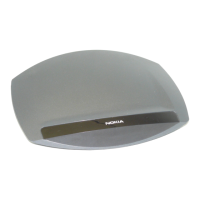3
16 Nokia IP40 Security Platform User’s Guide v1.1
Text Conventions
Table 2 describes the text conventions this guide uses.
-flag A flag is usually an abbreviation for a function, menu, or option
name, or for a compiler or preprocessor argument. You must enter
a flag exactly as shown, including the preceding hyphen.
.ext A filename extension, such as .ext, might follow a variable that
represents a filename. Type this extension exactly as shown,
immediately after the name of the file. The extension might be
optional in certain products.
( . , ; + * - / ) Punctuation and mathematical notations are literal symbols that
you must enter exactly as shown.
' ' Single quotation marks are literal symbols that you must enter as
shown.
Table 1 Command-Line Conventions (continued)
Convention Description
Table 2 Text Conventions
Convention Description
Monospace font
Indicates command syntax, or represents computer or window
output, for example:
Log error 12453
Bold monospace font Indicates text you enter or type, for example:
# configure nat
Key names Keys that you press simultaneously are linked by a plus sign (+):
Press Ctrl + Alt + Del.
Menu commands Menu commands are separated by a greater than sign (>):
Choose File > Open.
The words enter and type Enter indicates you type something and then press the Return or
Enter key.
Do not press the Return or Enter key when an instruction says
type.
Italics
• Emphasizes a point or denotes new terms at the place where
they are defined in the text.
• Indicates an external book title reference.
• Indicates a variable in a command:
delete interface
if_name

